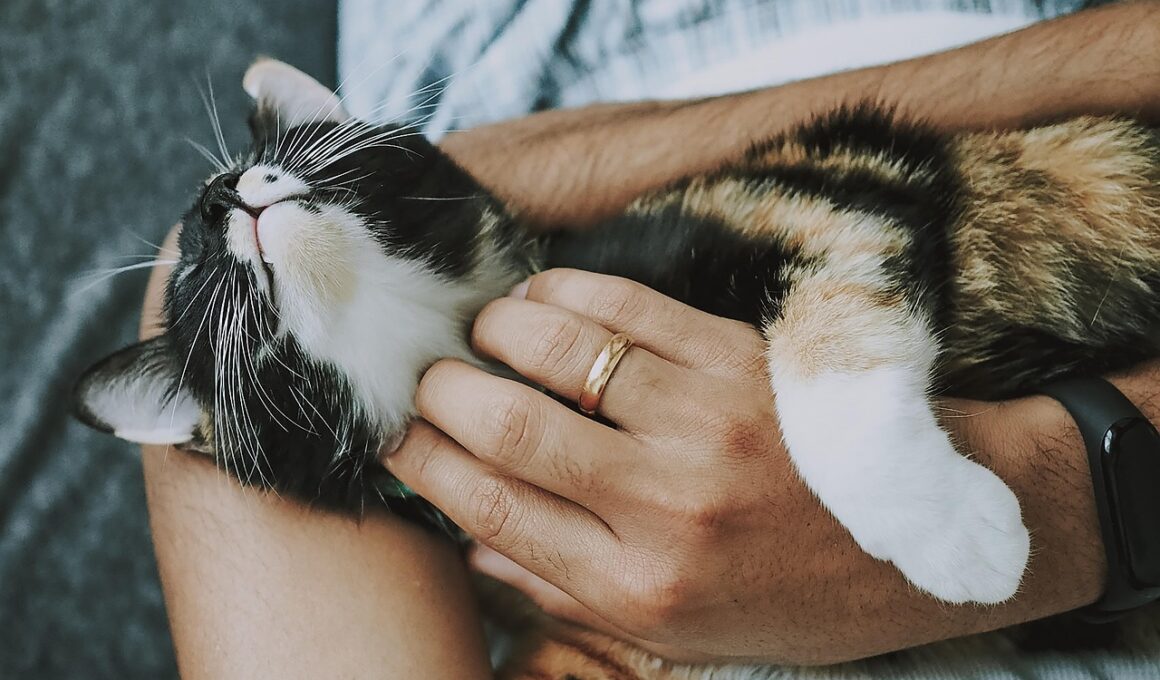How to Verify Cat Rescue Stories and Their Authenticity
In the world of cat rescue, stories of miraculous rescues often circulate, but not all of them are genuine. To verify the authenticity of these delightful narratives, start with research. Check the source of the story; credible rescue organizations usually share their rescues on official websites or social media. Look for concrete details like the cat’s name, the rescue date, and the location. These elements can guide you toward understanding the context of the story better. Additionally, it’s wise to cross-reference the story across multiple platforms. If a tale appears only on one blog or personal page, consider its credibility. In this digital age, many false stories can easily go viral, often sharing misleading information. Furthermore, don’t hesitate to reach out to the rescue organization directly. Asking the organization about their stories not only provides clarity but also shows your support for their mission. By practicing careful verification, you not only protect yourself from misinformation but also promote a culture of accountability in cat rescues that genuinely helps animals in need.
Another great way to gauge the authenticity of cat rescue tales is by connecting with the community. Participate in online forums, social media groups, or local rescue meetups. Engaging with volunteers, fosters, and fellow cat lovers will help you obtain firsthand accounts and experiences about various rescues. Often, these personal stories have unique details that reflect the actual events surrounding the rescue. Furthermore, you might discover the trials some organizations face and the behind-the-scenes efforts involved in saving a cat’s life. A strong community will often rally around reputable stories, lending their voices to the truth. Social media can be a double-edged sword, as many feel compelled to share rescue stories, even if they haven’t been verified. Therefore, focusing on community discussions can help separate the genuine stories from fabrications. Be mindful of the emotional aspect of these stories, as they tug at your heartstrings and make you eager to believe them. Holding back skepticism while verifying claims is essential. The more active you are in the community, the better equipped you’ll be to navigate these heartwarming, yet complex, stories.
Understanding Rescue Organizations
Familiarizing yourself with various organizations can also significantly aid in verifying rescue stories. Each rescue group has its own policies and approaches, which can reflect the truthfulness of their tales. Review their mission statements, success rates, and the services they provide to understand better what they stand for. Reputable organizations often maintain transparency about their circumstances, and they are willing to share success stories, even the struggles involved. Many rescues operate with strict ethical policies, focusing on responsible reporting to maintain trust. Doing due diligence on an organization’s history can reveal patterns of honesty in their communications. It’s also valuable to consider how they handle criticism; groups that welcome constructive feedback are often more credible. In contrast, organizations that evade accountability or downplay negative experiences may not be reliable. By pouring time into understanding the organizations behind rescue stories, you can better distinguish between legitimate rescues and embellished accounts. Recognizing red flags or seeking clarity will bolster your ability to discern factual information surrounding cat rescues.
Moreover, don’t underestimate the power of visual evidence when verifying cat rescue stories. Photos or videos accompanying a story can serve as crucial proof of authenticity. Take a moment to scrutinize images: check for signs of editing or professional enhancement that can indicate a fabricated story. Many organizations maintain extensive social media profiles with photographic evidence of their rescues, fostering trust from their audience. Be cautious, though, as misleading images can circulate, often detached from their original context. Understanding the original environment of the images can clarify the situation. Researching the backgrounds of the cats featured in a story can also unveil their history. Videos demonstrating rescue efforts engaged by the local community can offer additional proof regarding credibility. Remember that while emotional appeals may engage your heart, it’s vital to analyze these visual components with a critical eye. Therefore, trust but verify; emotional tales can often be molded to fit narratives that may not reflect reality fully. Validation through multimedia forms can thus help reinforce a story’s integrity.
Spotting Common Myths
Understanding common myths about cat rescues is critical for verifying authenticity. Many believe all rescue stories involve distressed cats being saved at the last minute by heroic individuals. While this scenario is captivating, it doesn’t represent every rescue effort accurately. Overdramatized narratives do not reflect the diligent work of everyday volunteers or established organizations. Real rescues are often planned, procedural, and involve numerous individuals working together to provide safe environments for cats. Additionally, some myths perpetuate ideas about rescue cats being turned away due to superficial concerns, such as age or breed. Many organizations actively try to dispel these fallacies by showcasing their inclusive policies and experiences. It’s essential to recognize that stories rooted in myths can affect public perception and support for legitimate rescues. By educating yourself and others regarding these misconceptions, you promote a better understanding of the rescue process. Identifying these myths can build a more honest discourse around cat rescue stories, emphasizing the dedication, compassion, and determination of hardworking rescue workers who genuinely strive to make a difference.
Lastly, don’t hesitate to share your findings with others. If you come across a rescue story that raises your suspicions, discuss it with fellow enthusiasts or online communities. Each individual can contribute their perspectives based on experiences and connections they’ve made within the rescue circle. Sharing insights allows the community to grow collectively more informed, building better approaches for verifying stories moving forward. As narratives unfold and evolve, understanding their authenticity improves trust, ensuring that support is directed solely towards deserving organizations. You might enchant fresh tails of rescue together with friends, creating a richer, more transparent environment where the truth thrives. Use social media platforms wisely to promote awareness about fraudulent stories and protect those who genuinely rescue animals in distress. Additionally, informal meet-ups or chat groups focused specifically on rescue stories can boost the connection among pet lovers. By taking an active role, you contribute significantly to fostering integrity in storytelling about cats and their rescues, helping every feline find the love they deserve.
Final Thoughts on Authenticity
In conclusion, verifying cat rescue stories offers insights into not only understanding the authenticity of the narrative but also supporting the effort of the organizations behind them. While heartwarming tales certainly bring joy, a responsible approach toward assessing these stories can lead to a more profound appreciation of the hard work in animal welfare. By utilizing critical thinking, community engagement, and resource exploration, you can enable the spread of truthful stories to foster a culture of transparency as part of the narrative. Recognizing authenticity doesn’t mean disregarding the emotional aspects; rather, it affirms the storytelling integrity. You play a crucial role in supporting organizations and sympathizing with their initiatives. Stay proactive in connecting with those involved in rescues, as these connections build a resilient network of support that thrives on transparency. Forming a community of responsible storytellers elevates cat rescue narratives. A carefully informed audience will not only drive support, funds, and volunteers toward effective organizations but also honor the countless cats whom we wish to see rescued and loved. Thus, proper verification of information ensures every cat’s voice echoes accurately.
In this ongoing journey around cat rescue stories, remember that verification not only takes work but also community collaboration. It’s essential to keep our hearts open while seeking the truth, particularly in a time when misinformation can spread rapidly. Continue sharing not just anecdotes, but also methods to verify narratives, engaging with potential adopters and rescuers alike. Everyone can contribute, creating an environment where authenticity reigns and misinformation is challenged. Each verified story can inspire another to get involved in cat welfare initiatives, leading more individuals to foster or adopt cats in need. Ensuring that they know which organizations are credible will inspire confidence to take action. Through diligent verification and community engagement, the tales we tell can reflect the compassion and determination of rescue efforts everywhere. We each hold the responsibility of ensuring these stories contribute positively to the cat rescue landscape. So next time you hear a captivating rescue story, remember to investigate further, engage with others, and verify the facts. Together, we can promote genuine narratives that highlight the vital work being done to save cats, while empowering their future. Supporting authenticity in storytelling enriches the rescue community, encouraging love and care toward all cats.


